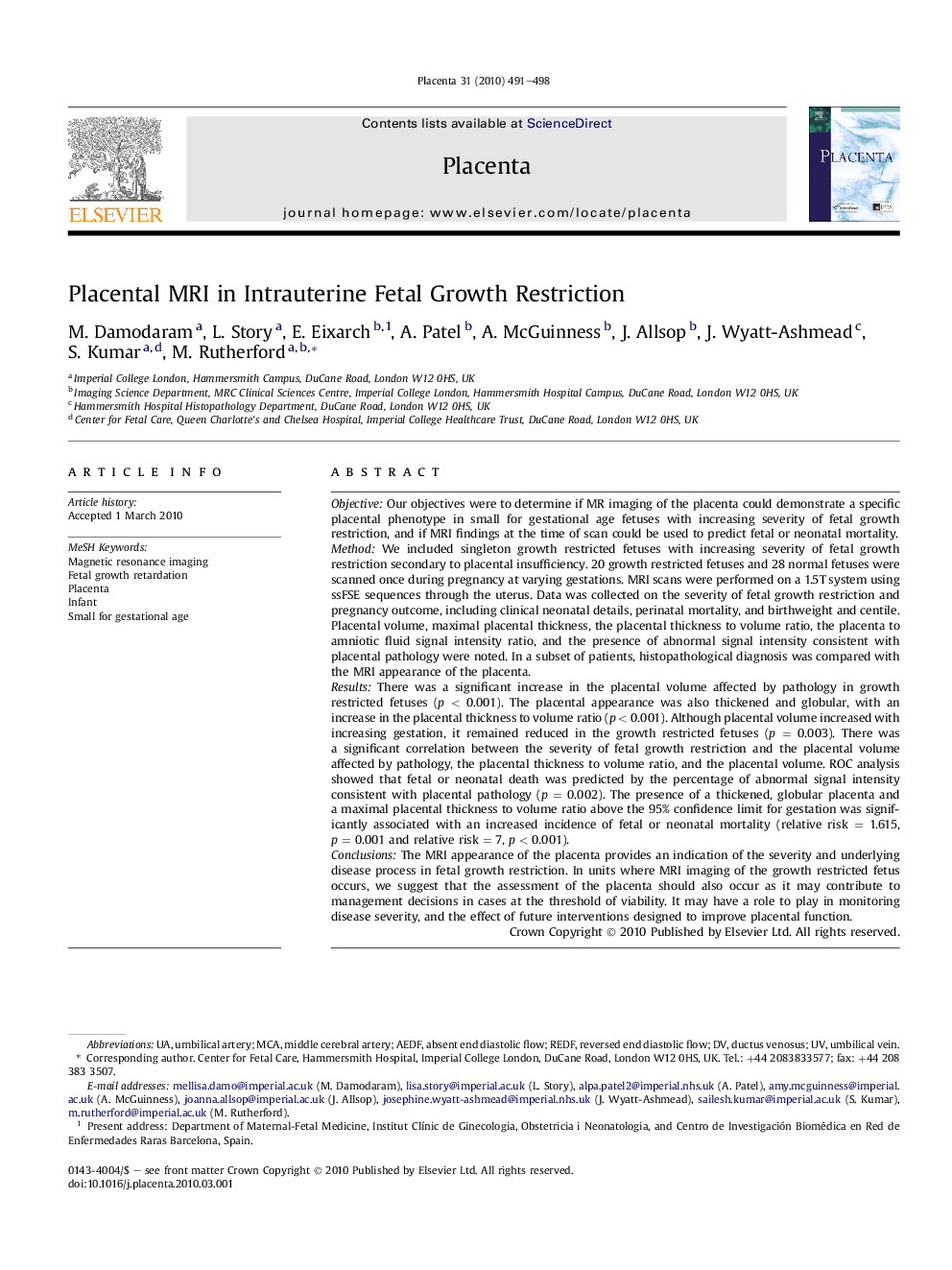| کد مقاله | کد نشریه | سال انتشار | مقاله انگلیسی | نسخه تمام متن |
|---|---|---|---|---|
| 5895861 | 1154488 | 2010 | 8 صفحه PDF | دانلود رایگان |

ObjectiveOur objectives were to determine if MR imaging of the placenta could demonstrate a specific placental phenotype in small for gestational age fetuses with increasing severity of fetal growth restriction, and if MRI findings at the time of scan could be used to predict fetal or neonatal mortality.MethodWe included singleton growth restricted fetuses with increasing severity of fetal growth restriction secondary to placental insufficiency. 20 growth restricted fetuses and 28 normal fetuses were scanned once during pregnancy at varying gestations. MRI scans were performed on a 1.5T system using ssFSE sequences through the uterus. Data was collected on the severity of fetal growth restriction and pregnancy outcome, including clinical neonatal details, perinatal mortality, and birthweight and centile. Placental volume, maximal placental thickness, the placental thickness to volume ratio, the placenta to amniotic fluid signal intensity ratio, and the presence of abnormal signal intensity consistent with placental pathology were noted. In a subset of patients, histopathological diagnosis was compared with the MRI appearance of the placenta.ResultsThere was a significant increase in the placental volume affected by pathology in growth restricted fetuses (p < 0.001). The placental appearance was also thickened and globular, with an increase in the placental thickness to volume ratio (p < 0.001). Although placental volume increased with increasing gestation, it remained reduced in the growth restricted fetuses (p = 0.003). There was a significant correlation between the severity of fetal growth restriction and the placental volume affected by pathology, the placental thickness to volume ratio, and the placental volume. ROC analysis showed that fetal or neonatal death was predicted by the percentage of abnormal signal intensity consistent with placental pathology (p = 0.002). The presence of a thickened, globular placenta and a maximal placental thickness to volume ratio above the 95% confidence limit for gestation was significantly associated with an increased incidence of fetal or neonatal mortality (relative risk = 1.615, p = 0.001 and relative risk = 7, p < 0.001).ConclusionsThe MRI appearance of the placenta provides an indication of the severity and underlying disease process in fetal growth restriction. In units where MRI imaging of the growth restricted fetus occurs, we suggest that the assessment of the placenta should also occur as it may contribute to management decisions in cases at the threshold of viability. It may have a role to play in monitoring disease severity, and the effect of future interventions designed to improve placental function.
Journal: Placenta - Volume 31, Issue 6, June 2010, Pages 491-498